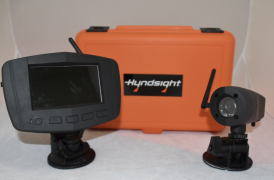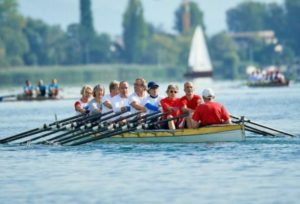Steer Like a Boss – Para Vs Able-bodied
Many people have asked me about the challenges of coxing a para crew compared to my experience of able-bodied crews. Is it different? Do you have to change the way you cox?
I can tell you that my experience of coxing a para crew is fundamentally the same as coxing an able-bodied crew. My role is still part motivator, part strategist and part coach. I don’t evaluate how I should cox a crew with disabilities, instead like any other crew I look at how to cox them based on their abilities. Once the basic skills have been acquired and the crew begins to work harder, gets faster and gets stronger, it’s easy to forget they have any impairment. Having said that, I do approach every crew I cox differently, because every crew, para or able-bodied, consists of different individual people.
Effective verbal direction as coxswain
For instance, some people think you need to cox a visually impaired athlete differently; however, the coxswain is the ‘eyes’ of the crew. Coxing a visually impaired rower is not so different from coxing able-bodied rowers who are racing backwards down the course somewhat “blind”. Both crews require verbal direction on where they are on the race course and where they are in relation to other crews.
 Renae Domaschenz Rowing Australia Coxswain
Renae Domaschenz Rowing Australia Coxswain
Learning about every athlete as a person, their particular strengths and weaknesses, helps me to cox each crew effectively. I have to understand how to motivate each individual athlete to get the best out of them. I try a variety of calls to determine what makes a difference between the crew having a good performance versus a great performance. I fine-tune what drives each athlete as I lock in a style of coxing that gets the best out of the crew and the result that reflects their extremely hard work. In the end, no matter the crew, it’s really a matter of coming back to what I know as an experienced coxswain and coach and experimenting with it.
5 Top Tips for Good Coxing
I use my knowledge and passion for the sport of rowing, along with my skills as a coxswain to achieve the goals that we as a crew have set out to accomplish. To do this:-
- Para or able bodied – Steering the boat like a boss is the most important of my tasks. It is imperative to navigate the shortest possible route to the finish line.
- Para or able-bodied – I need the ability to get 8 strong women, 8 strong men or 2 strong men in addition to 2 strong women to all work together.
- Para or able-bodied – I must execute a strategy and facilitate communication and synchronicity between rowers.
- Para or able-bodied – I must continue to learn about the biomechanics of the stroke and the way each rower’s body works best to optimise the power in the boat which enhances the technical development of the entire crew.
- Para or able-bodied – When all these things come together, as a coxswain I can then focus on finding the best opportunity to win a race.
In the end there is no secret recipe to coxing para crews, but what I can say is that my experience with these crews has certainly been very rewarding. Para or able bodied – I still look forward to the thrill of driving the boat across the finish line – especially with a medal on the other side!
Renae Domaschenz
Rowing Australia PR3 4+ coxswain 2018
Rowperfect resources for Adaptive and Para Rowing
- Squat Technique using 776BC clothing (as worn by Renae in the photo above)
- Adaptive Rowers new tool – Hyndsight
- Resources for Para Rowing and Adaptive Rowing – a ton of links from training plans to Facebook Groups
- One year adaptive rowing training programme free download
- Strength Training for Adaptive Rowers [RowingChat Podcast]







